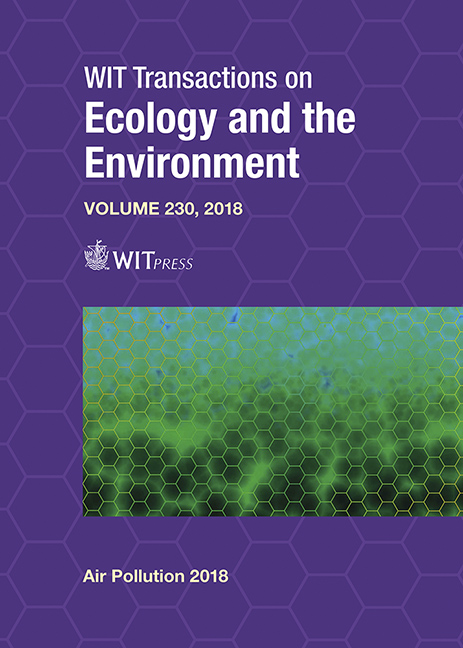ANALYSIS OF AIR POLLUTANT EMISSIONS IN A WASTEWATER TREATMENT PLANT USING DISPERSION MODELS
Price
Free (open access)
Transaction
Volume
230
Pages
12
Page Range
219 - 230
Published
2018
Paper DOI
10.2495/AIR180211
Copyright
WIT Press
Author(s)
LORENZO FILENI, GIORGIO MATTEUCCI, GIORGIO PASSERINI, UMBERTO RIZZA
Abstract
The dispersion of air pollutants such as Ammonia (NH3) and Hydrogen Sulphide (H2S) emitted by a municipal wastewater treatment plant (WWTP) was studied for a period of over one year. The main intent was to support the environmental impact assessment focusing on the diffusion of annoying odours over surrounding areas during the regular activity of the sewage treatment facility. The adopted methodology consists in comparing, in three test cases, the performance of the Gaussian plume model AERMOD, an American Meteorological Society and U.S. Environmental Protection Agency Regulatory Model, against the performance of the 3-D Lagrangian model AUSTAL2000, a German Dispersion Model developed according to the Technical Instructions on Air Quality Control. Both models were run over a domain of about 30km2 made of hilly zones and located in the centre-eastern Italy. Ten sources of airborne pollutants, located along the sludge treatment line and considered as area sources, were taken into account. The diffuse emissions associated with odour production within WWTP were estimated considering the pollutant emission factors suggested by the American Environmental Protection Agency (EPA). The test cases included different emission scenarios deriving from three different operative plant configurations set in order to investigate the most impacting one. The results show a good agreement between the two model outputs since the annual average for NH3 and H2S are almost equivalent. These concentrations are below the legal limits while the highest values, measured at closest receptors, are beneath the odour perceptibility thresholds. Some noteworthy differences concern the AERMOD distribution maps that show a sort of pollutant stagnation over complex topography areas, especially in valleys, and a farer allocation of the highest pollutants levels from the source, while the AUSTAL2000 model is more biased to distribute the highest values closer to the sources.
Keywords
AERMOD, AUSTAL2000, hydrogen sulphide, ammonia, odour emissions, wastewater treatment plant, sludge unity treatment





